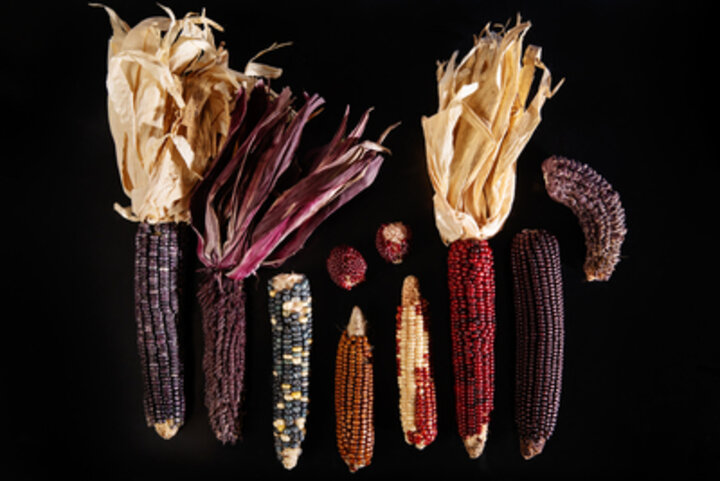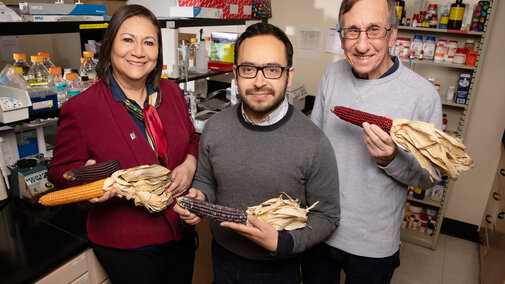By Sharita Forrest, University of Illinois
CHAMPAIGN, Ill. — Scientists at the University of Illinois have developed new hybrids of purple corn containing different combinations of phytochemicals that may fight obesity, inflammation and diabetes, a new study in mice indicates.

The pericarp – or outer layer – of purple and other brightly colored corn kernels also may provide an alternative source of colorants for food products, giving corn producers another value-added product from their crop, said the U. of I. team led by food science professor Elvira Gonzalez de Mejia, crop sciences professor John Juvik. They published their findings recently in the journal Food Chemistry.
From a strain of maize called Apache Red, Juvik’s team bred 20 genetic varieties of purple corn, each with a unique combination of anthocyanins, the nutritious, natural pigments that give the pericarp its vibrant color.
Widely found in plant tissues, phenolic compounds tend to be aromatic and contribute to the color, flavor and acidity of fruits. Anthocyanins are one class of phenols, and studies have associated the consumption of anthocyanin-rich foods with reduced risks of cardiovascular disease, Type 2 diabetes, and certain types of cancer.
Findings
The mouse cell models in the study simulated those of obese people with high concentrations of lipids and inflammation in their cells, or healthy individuals who regularly eat plants containing phenolic compounds, de Mejia said. “So these are very real models that can be translated into in vivo studies with humans or animals.”
- They observed that the phenolic compounds in the extracts altered the cells’ development, reducing the adipocytes’ fat content from 8%-56%, depending on the differing phenols used.
- A key marker of insulin resistance decreased by 29%-64%, they found, and the cells’ glucose uptake decreased by 30%-139%, depending on the chemical composition of the anthocyanins used.

